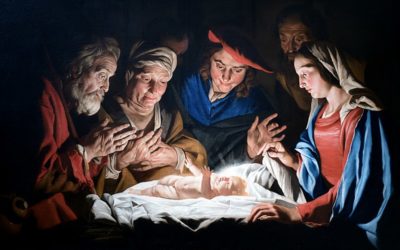The summer of 1833 was a busy time for the new Church and its members. Sections 94‒97 of the Doctrine and Covenants embody four of six revelations the Prophet Joseph Smith received during that busy summer. The revelations are not arranged in chronological order but can still be understood by reading their content and comparing dates. They deal with constructing temples in Ohio and Missouri and warn of trouble in Zion.
Doctrine and Covenants 94
Joseph Smith explained that “the object of Gathering the Jews together or the people of God in any age of the world . . . was to build unto the Lord an house whereby he could reveal unto his people the ordinances of his house . . . for their are certain ordinances & principles that when they are taught and practized, must be done in a place or house built for that purpose[. T]his was purposed in the mind of God before the world was.” (Wilford Woodruff, Journal, June 11, 1843.)
In 1833, the Church had two main gathering places, Missouri and Ohio. Not surprisingly, the Lord directed that a temple be built in each location. On August 2, 1833, the Lord gave the revelation that is now section 94 of the Doctrine and Covenants. In this revelation, the Lord directs that other buildings also be constructed in Kirtland, including a house for “the ministry of the presidency” (verse 3), or what we would call a Church Administration Building today, and a house “for the work of the printing” (verse 10), or what we would call a Church printing center today. For further historical background on this section, click here.
Doctrine and Covenants 95
On June 1, 1833—three months before section 94 was received—the Lord gave Joseph Smith a revelation providing further instructions about building the House of the Lord in Kirtland. For additional historical background, click here.
In this revelation—now section 95 of the Doctrine and Covenants—the Lord explains that one purpose of the house is “to endow those whom I have chosen with power from on high” (verse 8).
The Lord also tells His servants that the house is not to “be built . . . after the manner of the world” (verse 13) but instead “after the manner which I shall show unto three of you, whom ye shall appoint and ordain unto this power” (verse 14).
Unlike future temples, which would be limited mostly to performing ordinances, this house of the Lord was to be a multipurpose building whose uses He specified. The lower court or chapel was to “be dedicated unto me for your sacrament offering, and for your preaching, and your fasting, and your praying, and the offering up of your most holy desires unto me, saith your Lord” (verse 16). The upper court or chapel was to “be dedicated unto me for the school of mine apostles” (verse 17).
Doctrine and Covenants 96
The temporal and spiritual aspects of the Church are interconnected, and on June 4, 1833—three days after section 95 was received about the temple—the Lord gave a revelation about the French Farm, which was a Church-owned property that included the area where the temple was to be built. Questions arose about how to manage and divide the property, and in this revelation, the Lord assigned the responsibility to Bishop Newel K. Whitney,
For additional background on this section, click here.
Doctrine and Covenants 97
In 1833, the fastest form of communication between Ohio and Missouri was mail carried by people, wagons, carriages, boats, or animals. On August 2, 1833, the Lord gave a revelation to Joseph Smith that dealt with several matters, including the school of the prophets in Missouri (verses 3‒6) and building the temple there (verses 10‒17).
What makes this section particularly interesting, however, is what the Lord says about those who settled in Zion. There were “many,” the Lord said, who “are truly humble and are seeking diligently to learn wisdom and to find truth” (verse 1). “Blessed are such,” He declared, saying He would “show mercy” unto them (verse 2). If the Saints in Zion collectively did what is right and sacrificed as they had been asked to do, then Zion “shall prosper,” the Lord promised (verses 8‒9, 18‒21).
But there were others, the Lord added, that must needs be chastened” (verse 6), and for these, He warned, “the ax is laid at the root of the trees” (verse 7). And if Zion “observe not to do whatsoever I have commanded her,” the Lord warned, “I will visit her according to all her works, with sore affliction, with pestilence, with plague, with sword, with vengeance, with devouring fire” (verse 26).
Just before this revelation was received and before it reached Zion, the Saints there began to experience violence. Over the next several weeks, they would be driven from Jackson County.
For more on this section, click here.
Credit for image at top of page: Artist portrayal of mob violence against the Saints in Jackson County, Missouri, July 20, 1833, public domain, copied from https://www.churchofjesuschrist.org/study/history/topics/jackson-county-violence?lang=eng (accessed Aug. 29, 2021).



